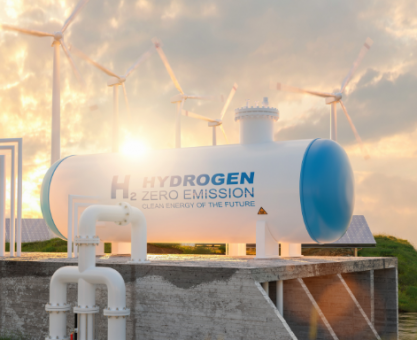Executive Summary
-
Innovations in Carbon Capture Technology: Explore the latest advancements that are set to revolutionize industries.
-
Industry-Specific Impacts: Understand how different sectors will benefit from these breakthroughs.
-
Challenges and Solutions: Delve into the hurdles faced by industries and the innovative solutions on the horizon.
-
Strategic Insights for 2025: Gain actionable advice for leveraging carbon capture technologies effectively.
Introduction
As global awareness of climate change intensifies, industries face growing pressure to reduce their carbon footprints. Carbon capture technology has emerged as a pivotal solution in this endeavor, promising to significantly lower emissions. This article explores why understanding upcoming breakthroughs in carbon capture is crucial for industries aiming to meet sustainability targets and regulatory requirements. Readers will gain insights into the latest technological advancements, sector-specific impacts, and strategic actions to capitalize on these developments.
Definitions / Context
Carbon Capture Technology (CCT) refers to the process of capturing carbon dioxide (CO2) emissions from industrial sources before they enter the atmosphere. Recent innovations are not only enhancing the efficiency of these technologies but also making them more economically viable. By 2025, carbon capture is expected to play a critical role in mitigating climate change across various industries.
Benefits / Pros
-
Enhanced Efficiency: New technologies can capture up to 95% of CO2 emissions.
-
Cost-Effectiveness: Advances in materials and processes are reducing operational costs.
-
Versatility: Applicable across numerous industries including energy, manufacturing, and chemical processing.
Risks / Cons / Challenges
-
High Initial Investment: Significant upfront costs can be a barrier for many companies.
-
Technological Complexity: Requires specialized expertise and infrastructure.
-
Regulatory Hurdles: Compliance with ever-evolving regulations can be challenging.
Step-by-Step Process
How to Implement Carbon Capture Technology in Your Industry:
-
Assess Emission Sources: Identify key areas of CO2 emission within your operations.
-
Select Appropriate Technology: Choose a carbon capture solution that aligns with your industry needs.
-
Develop a Business Case: Analyze the cost-benefit ratio and potential ROI.
-
Pilot Testing: Implement a small-scale trial to evaluate effectiveness.
-
Full-Scale Deployment: Roll out the technology across all applicable operations.
A leading global steel manufacturer recently integrated a cutting-edge carbon capture system, resulting in a 40% reduction in emissions within the first year. This not only helped the company meet stringent environmental standards but also enhanced its reputation as a sustainability leader.
— Global Steel Manufacturer
Expert Tips / Strategic Insights
-
Epiidosis recommends: Collaborate with technology providers for tailored solutions.
-
Monitor Regulatory Changes: Stay informed about legislative updates to ensure compliance.
-
Invest in Employee Training: Equip your workforce with the necessary skills to manage new technologies.
Tools / Resources / Calculators
-
Carbon Capture Project Estimator: A free tool to assess potential savings and ROI for your business.
-
Epiidosis Resource Hub: Access white papers and case studies on successful carbon capture implementations.
Conclusion
Carbon capture breakthroughs are set to transform how industries approach sustainability. By understanding and leveraging these advancements, businesses can not only reduce their carbon footprint but also gain a competitive edge. For personalized guidance on integrating these technologies into your strategy, consider consulting with industry experts.




















